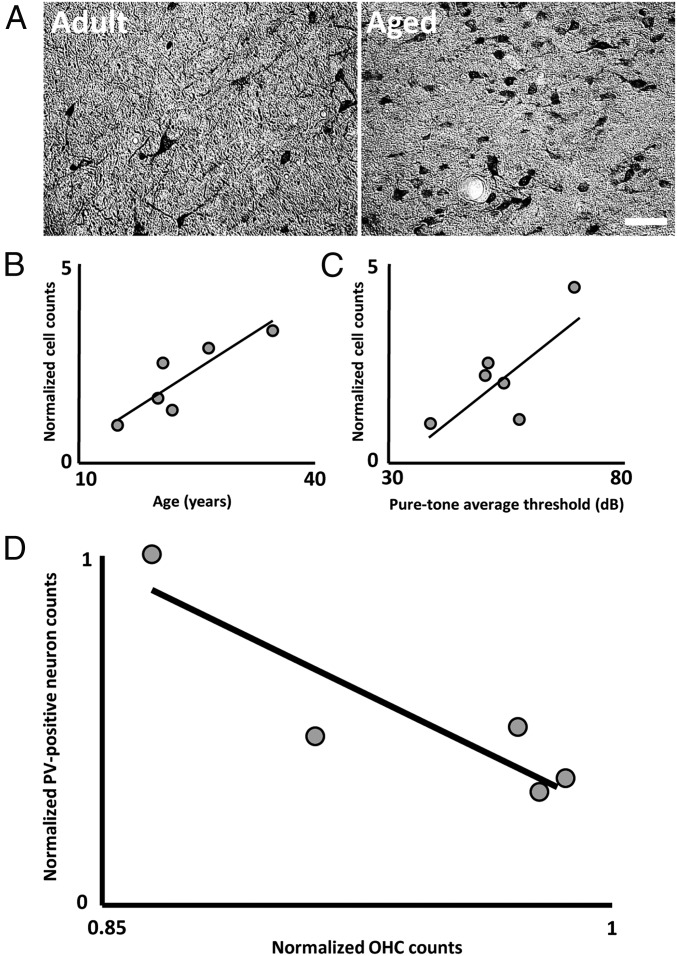Fig. 3.
Greater numbers of neurons expressing CaBPs in the central auditory system of aging macaques is associated with poorer peripheral auditory function. (A) Photomicrographs of parvalbumin-expressing neurons in an adult and aged macaque auditory brainstem. Note the qualitatively greater density of parvalbumin-positive cells in the older animal. Reprinted with permission from ref. 58. (B) Age is significantly associated with greater numbers of auditory neurons expressing parvalbumin in the core of the inferior colliculus (IC). Reprinted with permission from ref. 59, which is published under CC BY 3.0. (C) Animals with more parvalbumin-positive cells in the IC had higher auditory brainstem response pure-tone average thresholds. (D) Remarkably, animals with fewer outer hair cells (OHCs) in the cochlea had more neurons expressing parvalbumin (PV) in the dorsal cochlear nucleus of the auditory brainstem. Note that both auditory brainstem response thresholds and hair cell numbers reflect cochlear function. Together, these data indicate that chemical expression patterns of CaBPs in the central auditory system are associated with peripheral auditory dysfunction. (Scale bar, 100 μm.) Reprinted with permission from refs. 58; and 59, which is published under CC BY 3.0.

